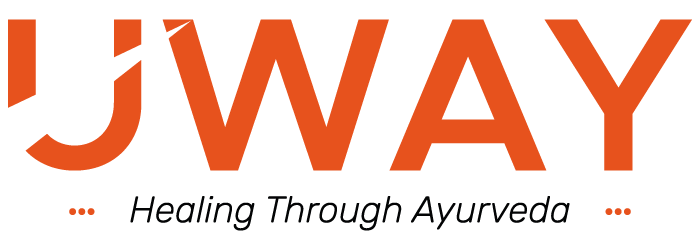Posted by Dr. Karthik Pandit

Cervical spondylosis, also called arthritis of the neck, is an age-related degeneration (wear and tear) of the bones and discs in your neck. The condition can lead to intense pain, stiffness, numbness, and restricted movement of your neck.
Cervical spondylosis worsens with age. More than 85% of people older than age 65 are affected by it. Although the condition was traditionally known as a disease due to old age, of late there’s been an increase in its incidence among the younger and middle-aged groups due to changes in lifestyle and working conditions.
Many people with cervical spondylosis do not experience the obvious symptoms, they may not even be aware of the degenerative changes that are taking place in their neck. When the actual symptoms do occur, they typically manifest as pain and stiffness in the neck region. Over time, in some people these degenerative changes can, compress the spinal cord or nerve roots attached to it, causing permanent damage.
While there is no specific cure for cervical spondylosis, the right treatment can eliminate symptoms, slow down the rate of progression of the disease, and help you to have an active lifestyle with an improved quality of life.
Overview of treatment for Cervical Spondylosis in Allopathy and Ayurveda
The objective of treatment for cervical spondylosis is to relieve the associated symptoms of the disease, prevent incidence of disability due to the condition and to improve the overall quality of life
Allopathic treatment generally involves the use of over-the-counter pain killers or Nonsteroidal Anti-inflammatory medicines, muscle relaxants, anti-epileptic drugs, steroid injections, and physical therapies. In some cases, these medications may only be needed for a short period of time to ease symptoms, while in other cases, long-term use may be necessary to manage chronic pain, and other associated symptoms.
In certain cases, when the above treatments fail to reduce the neck pain and associated signs and symptoms, surgical intervention might be advised.
Ayurveda manages cervical spondylosis through a holistic approach, that considers not just the physical symptoms but involves the mental, emotional, and lifestyle factors as well. The treatment regimen would include, oral herbal medications, oil therapy, yoga, and lifestyle changes.
Ayurveda considers cervical spondylosis to be a result of an imbalance in the body’s three principal doshas, and the treatment often involves oral herbal medications, massage, yoga, changes in dietary habits and lifestyle to restore the balance and improve overall health. This holistic approach can not only help to address the root cause of the condition, but also promote long-term wellness, and help to avoid the need for surgery even in severe cases.
Ayurvedic medicines are made of time-tested natural herbs and substances, that are considered to be safe, even in conditions, where the medicines have to be taken for a longer duration.
What are the Symptoms?
Many people mistake cervical spondylosis for neck sprain or fatigue because the symptoms of both these conditions can be pretty similar. It can also be due to the fact that, many people may not be aware of cervical spondylosis and may attribute their symptoms to everyday activities like prolonged use of the computer or carrying of heavy bags.
Identifying the symptoms and early signs of cervical spondylosis is important because it allows for early diagnosis and treatment, which can help to prevent the condition from worsening and potentially leading to complications such as nerve damage or spinal cord compression.
Here are a few symptoms of cervical spondylosis you should look out for:
• Pain in the neck and shoulders
• Soreness or stiffness in the neck
• Headaches, especially at the back of your head
• Popping or grinding sensation when you turn your neck

What Causes Cervical Spondylosis to Develop?
Cervical spondylosis often develops as a result of the changes that happen to the bones(vertebrae) and discs of your spine as a result of the normal wear and tear due to aging. The intervertebral discs, which lies between adjacent vertebrae of the cervical spine, gradually degenerates and loses its fluid. Signs of osteoarthritis start to develop, which can include bony projections along the edges of the vertebral bones.
While the major factor for the development of cervical spondylosis is aging, it’s not the only one. Let’s look at the various other causes and risk factors of this condition.


Common causes of cervical spondylosis
- Dehydrated discs- The intervertebral discs act as soft cushions between the vertebrae of the cervical spine. Around the age of 40, these discs begin to dry out and shrink. This causes more bone-on-bone contact, which can lead to pain.
- Bone spurs- As the discs degenerate, the spine may produce extra amounts of bone to strengthen the spine. Unfortunately, these bone spurs can often pinch nerve roots and cause further damage.
- Herniated discs- Your age affects the exterior of your spinal discs as well. They’re not as smooth as they should be- instead there develop cracks on the exterior of the spinal discs which makes them to bulge (herniate). These bulging discs can sometimes press on the spinal cord and nerve roots causing extreme discomfort and pain.
- Stiff ligaments- Ligaments are short bands of tissue that connect bones and cartilage together. As you age, your ligaments and other connective tissues can become less flexible and lose some of their elasticity, leading to stiffness. This can be the result of natural degenerative processes of aging, as well as the cumulative effects of injury, poor posture, and inactivity. Whatever be the reason, this can lead to stiffness in the ligaments and decreased range of motion in the neck.
Risk factors for cervical spondylosis?
Cervical spondylosis often develops as a result of changes that happen to your neck joints as you grow older. Bone spurs, dehydration and disc herniation are all results of aging. Apart from age, other factors that can hasten the process of cervical spondylosis include:
- Previous neck injury: A history of neck injury can increase the risk of developing the condition.
- Occupation: Certain jobs that require repetitive neck movements or exposure to vibrations can increase the risk of developing cervical spondylosis.
- Poor posture: Maintaining poor posture while sitting or standing for prolonged periods can increase the risk of developing cervical spondylosis.
- Smoking: Smoking can lead to decreased blood flow to the neck region and further increase the risk of developing cervical spondylosis.
- Genetics: A family history of the condition may increase your risk.
- Overweight and inactivity: Being overweight and inactive increases the risk of developing cervical spondylosis. Excess weight puts added stress on the cervical spine, while a sedentary lifestyle can lead to decreased strength and flexibility in the neck and upper back.
How is cervical spondylosis diagnosed?
Cervical spondylosis is typically diagnosed through a combination of medical history, physical examination, and imaging tests. The following diagnostic tools may be used to diagnose cervical spondylosis:
- Physical examination: The doctor will assess your neck and upper back for any signs of pain, stiffness, or weakness. He may also perform tests to evaluate your reflexes, sensation, and muscle strength.
- Medical history: Your doctor may ask about your symptoms, past injuries, and any other medical conditions that may be related to cervical spondylosis.
- Imaging tests: The doctor may order imaging tests such as X-rays, MRI, or CT scans to get a detailed view of your cervical spine and identify any degenerative changes, herniated discs, or spinal stenosis.
- In some cases, the doctor may also order an electromyogram (EMG) or nerve conduction study to evaluate the health of your cervical nerve roots.
- The combination of these diagnostic tools can help the doctor diagnose cervical spondylosis and develop a treatment plan.
Managing cervical spondylosis, the ayurvedic way
Ayurveda views cervical spondylosis as a result of an imbalance of the three doshas, or biological energies, in the body. According to Ayurveda, cervical spondylosis is caused by vitiated vata dosha, which leads to the degeneration of the vertebrae and the inter vertebral discs. The root cause is treated by addressing this imbalance and restoring the natural state of health through various methods, including:
Customized treatment plan: Based on the diagnosis, the doctor creates a customized treatment plan that includes oral medications, oil application/therapy, yoga, and lifestyle changes.
Lifestyle changes
Lifestyle changes are an important aspect of treating cervical spondylosis with Ayurveda. The doctor may advice changes such as maintaining regular exercise, sleeping habits, stress management techniques and a healthy diet that includes foods that are warm, nourishing, and easy to digest, which can help reduce inflammation and promote overall health.
It is important to consult a qualified Ayurvedic doctor, before starting any treatment, as they can determine the best course of action based on your specific needs and conditions.
What happens if you leave cervical Spondylosis untreated?
- Chronic neck pain: The wear and tear of the spinal discs can cause chronic neck pain, which can become more severe over time
- Progressive nerve damage: As the spinal discs continue to degenerate, they may put pressure on the nerves in the neck, leading to progressive nerve damage
- Stiffness: The neck may become stiff, making it difficult to move the head and neck freely
- Weakness in arms and legs: If the spinal cord becomes compressed, it can cause weakness in the arms and legs<//li>
- Difficulty with coordination and balance: In severe cases, cervical spondylosis can affect coordination and balance, making it difficult to perform daily activities
It’s important to seek treatment for cervical spondylosis to prevent these and other complications from developing.
Takeaway
Allopathic treatment involves the use of over-the-counter pain killers, nonsteroidal anti-inflammatory medicines, muscle relaxants, anti-epileptic drugs, steroid injections, physical therapies, and surgery in extreme cases. Some cases, may need may require ongoing medication for management of chronic pain and other symptoms. Scientific studies have shown that the long-term use of Nonsteroidal Anti-inflammatory medicines have a lot of harmful effects on the body.
Ayurvedic management of cervical spondylosis usually takes a holistic approach that considers not just the physical symptoms but also the mental, emotional, and lifestyle factors, which can help address the root cause of the condition and promote long-term wellness.
Ayurvedic medicines are made of time-tested natural herbs and substances that are the gift of nature to mankind. Therefore, these medicines do not cause side-effects, even when taken on a long-term basis. With effective ayurvedic treatment, the disease progress can be slowed down, the cervical spine strengthened, with an improvement in the overall quality of life.
Consult a qualified ayurveda doctor at UWAY to determine the best course of treatment for your individual case.
At UWAY, the treatment for Cervical Spondylosis may include ayurvedic oral medications and external oil applications for mild cases. In addition to this, Panchakarma therapy may also be needed in severe cases. Diet and lifestyle modifications play an important role in the treatment regimen.
Average duration of the treatment for cervical spondylosis with ayurveda may vary from 3-6 weeks depending on the severity of the condition. A maintenance treatment may be required for long-term management.
An improvement in the overall condition can be perceived within 2-3 weeks of treatment. A high recovery rate is seen in most of the cases, with treatment for cervical spondylosis at UWAY.
Ayurveda medications are usually a very safe and effective option for treating cervical spondylosis.
At UWAY, our doctors prescribe only proven medicines from well-established and reputed ayurvedic medicine manufacturers. However, just like certain foods do not agree with everyone always, few ayurvedic medicines may cause mild side effects in some patients. This is very rare though. In case, you notice any such issue you can always talk to your consulting doctor or our medical team.






